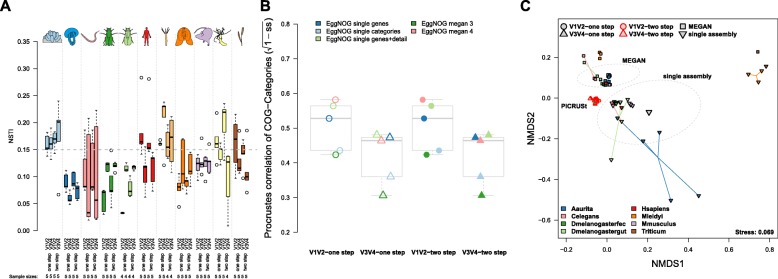Fig. 5.
a Differences in the Nearest Sequenced Taxon Index (imputation success) between variable regions (average: Z = 0.3869, P = 0.7017, approximate Wilcoxon test; probability: odds ratio = 1.5941, P = 0.1402, Fisher’s test) and amplification method (Z = 0.0667, P = 0.9472, approximate Wilcoxon test; probability: odds ratio = 1.5511, P = 0.1436, Fisher’s test). b Procrustes correlation of imputed- and shotgun-based COG categories among different techniques, with significantly higher correspondence between imputed and measured functional profiles in the V1 V2 compared to the V3 V4 region (F1,18 = 7.8537, P = 0.0118, ANOVA). c Non-metric multidimensional scaling displays Bray-Curtis distances based on functional category abundances (COG categories) derived from PICRUSt (V1 V2/V3 V4, one-step/two-step) and shotgun-based approaches (MEGAN, single assembly). Ellipses represent standard deviations of points within the respective groups

